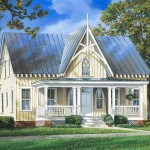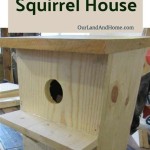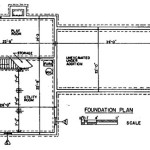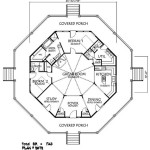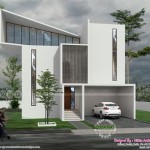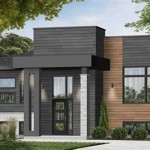House plans with a guest house refer to architectural designs for homes that incorporate a separate, smaller dwelling unit on the same property as the main house. Guest houses fulfill various purposes, including accommodating visiting family members, friends, or guests, providing privacy for extended family members or household staff, or even generating rental income.
One common application of house plans with a guest house is the hosting of extended family members. In scenarios where families are geographically dispersed, a guest house allows for comfortable and convenient accommodations during visits. It grants guests a sense of privacy and autonomy while still being close to the main household.
Moving forward, we will delve deeper into the intricacies of house plans with guest houses, including popular design options, considerations for integration with the main house, and tips for optimizing space and functionality in both the guest house and the main residence.
When considering house plans with a guest house, there are key points to keep in mind to ensure a harmonious and functional living space:
- Separate entrance for privacy
- Kitchenette or full kitchen
- Private bathroom
- Designated living area
- Outdoor space
- Harmony with main house design
- Adequate parking
- Storage and closet space
- Zoning and permit compliance
By incorporating these considerations into the planning process, you can create a guest house that seamlessly complements your main home and provides a comfortable and welcoming experience for your guests.
Separate entrance for privacy
Providing a separate entrance for the guest house is crucial for maintaining the privacy of both the guests and the main household occupants. A dedicated entrance allows guests to come and go without disturbing the main house, fostering a sense of independence and autonomy during their stay.
The separate entrance should be clearly marked and easily accessible, ideally located on a side or rear facade of the guest house to minimize noise and visual intrusion into the main living areas. It should be well-lit for safety and convenience, especially during evening hours.
Consider incorporating a small porch or patio adjacent to the guest house entrance, providing a welcoming and inviting space for guests to relax or socialize privately. This outdoor area can also serve as a buffer zone between the guest house and the main house, further enhancing privacy.
To ensure complete privacy, consider installing a lockable door or gate at the guest house entrance, allowing guests to control access to their living space. Additionally, strategically placed windows and landscaping can provide visual privacy from the main house and surrounding areas.
By providing a separate entrance for the guest house, you not only respect the privacy of your guests but also maintain the tranquility and privacy of your main household, creating a mutually beneficial living environment.
Kitchenette or full kitchen
When designing house plans with a guest house, the decision between incorporating a kitchenette or a full kitchen depends on several factors, including the intended usage, frequency of guest visits, and the overall budget.
A kitchenette is a compact and efficient kitchen space that typically includes a sink, small refrigerator, microwave, and limited counter space. It is suitable for short-term guests who may only require basic food preparation facilities, such as reheating leftovers or making quick meals. Kitchenettes are often found in guest houses intended for occasional use, such as weekend retreats or vacation rentals.
On the other hand, a full kitchen offers a more comprehensive cooking experience, with a full-size refrigerator, oven, stovetop, and ample counter and cabinet space. It is ideal for extended stays or guests who enjoy cooking and entertaining. A full kitchen allows guests to prepare and cook meals from scratch, providing greater flexibility and convenience during their stay.
The choice between a kitchenette and a full kitchen ultimately depends on the specific needs and preferences of the homeowners and their guests. If space is limited or the guest house is intended for infrequent use, a kitchenette may be a suitable option. However, if extended stays or frequent cooking is anticipated, a full kitchen would be more practical.
By carefully considering the intended usage and guest preferences, homeowners can determine the most appropriate kitchen configuration for their guest house, ensuring a comfortable and enjoyable experience for their visitors.
Private bathroom
Incorporating a private bathroom into the guest house is essential for providing guests with a comfortable and convenient living space. A well-designed bathroom should include the following elements:
- Toilet
- Sink
- Shower or bathtub
- Adequate lighting and ventilation
- Storage space for toiletries
The size and layout of the bathroom will depend on the overall size of the guest house and the specific needs of the homeowners and their guests. However, it is important to ensure that the bathroom is spacious enough to be comfortable and functional, while also being efficient in terms of space utilization.
Consider incorporating natural light into the bathroom design by installing windows or skylights. Natural light can make the space feel more inviting and reduce the need for artificial lighting during the day. Additionally, ensure that the bathroom has adequate ventilation to prevent moisture build-up and odors.
Providing storage space for toiletries and other bathroom essentials is crucial for the convenience of guests. This can be achieved through the inclusion of a vanity with drawers or shelves, a medicine cabinet, or a combination of both.
By incorporating a private bathroom into the guest house, homeowners can provide their guests with a comfortable and self-contained living space, ensuring a pleasant and memorable stay.
Designated living area
A designated living area in the guest house is crucial for providing guests with a comfortable and relaxing space to spend time during their stay. This dedicated area should be separate from the sleeping quarters and offer a comfortable seating arrangement, adequate lighting, and entertainment options.
- Comfortable seating:
The living area should have comfortable seating options, such as a couch, armchairs, or a combination of both. Ensure that there is enough seating for the maximum number of guests expected to occupy the guest house.
- Adequate lighting:
Provide ample natural and artificial lighting in the living area. Natural light can be incorporated through windows or skylights, while artificial lighting can be achieved through recessed lighting, table lamps, or floor lamps.
- Entertainment options:
Consider including entertainment options in the living area, such as a television, DVD player, or sound system. These amenities can provide guests with entertainment and relaxation during their stay.
- Designated dining space:
If the guest house does not have a separate dining room, consider incorporating a designated dining space within the living area. This can be achieved through a small dining table and chairs, or even a breakfast bar with stools.
By providing a designated living area in the guest house, homeowners can create a comfortable and inviting space for their guests to relax, socialize, and enjoy their stay.
Outdoor space
Incorporating outdoor space into house plans with a guest house offers numerous benefits, enhancing the overall livability and enjoyment of both the guest house and the main house. A well-designed outdoor space can provide guests with a private and relaxing area to unwind, socialize, or simply enjoy the fresh air.
One key consideration is the creation of a designated outdoor seating area. This can be achieved through a patio, deck, or porch, providing guests with a comfortable space to relax, dine, or entertain. Consider incorporating comfortable seating options, such as chairs, sofas, or a swing, and provide shade through umbrellas, awnings, or pergolas to enhance comfort during sunny or rainy weather.
Another important aspect is the inclusion of landscaping in the outdoor space. Thoughtful landscaping can create a visually appealing and inviting atmosphere, while also providing privacy and reducing noise levels. Consider planting trees, shrubs, and flowers to add color and texture to the space. Incorporate pathways or stepping stones for easy access and to delineate different areas within the outdoor space.
If space allows, consider adding a fire pit or outdoor fireplace to the outdoor area. This creates a cozy and inviting ambiance, perfect for evening gatherings or roasting marshmallows. Additionally, installing outdoor lighting can extend the usability of the space into the evening hours, allowing guests to enjoy the outdoor area even after sunset.
By incorporating outdoor space into house plans with a guest house, homeowners can provide their guests with a comfortable and enjoyable living experience, encouraging them to spend more time outdoors and creating lasting memories during their stay.
Harmony with main house design
When designing house plans with a guest house, it is important to consider the harmony between the guest house and the main house. This ensures a cohesive and visually appealing overall aesthetic for the property.
- Architectural style:
The architectural style of the guest house should complement that of the main house. For example, if the main house has a traditional design, the guest house should follow suit. This creates a sense of unity and coherence on the property.
- Exterior materials:
The exterior materials used for the guest house should be compatible with those used for the main house. This helps to create a cohesiveand prevent the guest house from looking like an afterthought.
- Roofline:
The roofline of the guest house should be in harmony with that of the main house. This means considering the pitch, shape, and materials used for the roof. A consistent roofline helps to create a unified and balanced overall look.
- Landscaping:
The landscaping around the guest house should complement that of the main house. This includes the choice of plants, hardscaping, and overall design. A cohesive landscaping scheme helps to create a seamless transition between the two structures and enhances theaesthetic of the property.
By considering these factors, homeowners can ensure that the guest house blends seamlessly with the main house, creating a harmonious and visually appealing living environment for both residents and guests.
Adequate parking
When designing house plans with a guest house, it is important to consider adequate parking for both residents and guests. This ensures that there is sufficient space for vehicles without overcrowding or inconvenience.
- Number of parking spaces:
Determine the number of parking spaces required based on the size of the main house, the guest house, and the anticipated number of guests. Consider both regular parking spaces and accessible parking spaces if needed.
- Location of parking spaces:
The parking spaces should be conveniently located near both the main house and the guest house. Avoid placing parking spaces far from the entrances, as this can be inconvenient for guests and residents alike.
- Type of parking spaces:
Consider the type of parking spaces required, such as standard parking spaces, compact parking spaces, or RV parking spaces. The type of spaces will depend on the vehicles that will be using them.
- Guest parking :
Clearly designate guest parking spaces to avoid confusion and ensure that guests know where to park. This can be done through signage, pavement markings, or a dedicated parking area.
By considering these factors, homeowners can ensure that their house plans with a guest house include adequate parking, providing convenience and ease of access for both residents and guests.
Storage and closet space
Incorporating adequate storage and closet space into house plans with a guest house is crucial for ensuring the comfort and convenience of guests during their stay. Well-planned storage solutions allow guests to unpack their belongings, organize their items, and feel at home in the guest house.
One key consideration is the provision of sufficient closet space in the guest house bedrooms. Closets should be large enough to accommodate guests’ clothing, luggage, and other personal belongings. Consider incorporating both hanging space and shelves to maximize storage capacity and cater to different storage needs.
In addition to bedroom closets, it is important to include storage space in other areas of the guest house. A linen closet is essential for storing extra bedding, towels, and toiletries. A coat closet near the entrance can provide a convenient place for guests to hang their coats, hats, and scarves. Additionally, consider incorporating built-in storage solutions, such as shelves or drawers, in the living area or kitchenette to provide additional storage for books, games, and other items.
When designing storage solutions for the guest house, it is important to consider the specific needs and preferences of guests. For example, if the guest house is intended for extended stays or frequent visits, more storage space may be required. Additionally, consider providing specialized storage solutions, such as a wine rack or a safe, if necessary.
By incorporating well-planned storage and closet space into house plans with a guest house, homeowners can ensure that their guests have a comfortable and convenient stay, feeling at home away from home.
Zoning and permit compliance
Zoning and permit compliance are essential considerations when planning house plans with a guest house. Zoning laws regulate the use of land and buildings within a specific area, and obtaining the necessary permits ensures that the construction and use of the guest house adhere to local regulations and building codes.
- Zoning verification:
Before finalizing house plans, verify the zoning regulations for the property to determine if a guest house is permitted. Some zoning codes may restrict the construction of additional dwelling units or specify size and setback requirements for guest houses.
- Building permit:
Once the zoning compliance is confirmed, obtain a building permit from the local building department. The permit application typically requires detailed plans and specifications for the guest house, including its size, location, and structural design.
- Building code compliance:
The guest house must be constructed in accordance with local building codes, which set standards for safety, structural integrity, and energy efficiency. Building inspectors will review the construction process to ensure compliance with these codes.
- Occupancy permit:
After the guest house is constructed, an occupancy permit is required before it can be legally occupied. This permit certifies that the guest house meets all safety and building code requirements and is suitable for habitation.
By adhering to zoning and permit regulations, homeowners can ensure that their house plans with a guest house are compliant with local laws and building standards, avoiding potential legal issues and safety concerns.










Related Posts

